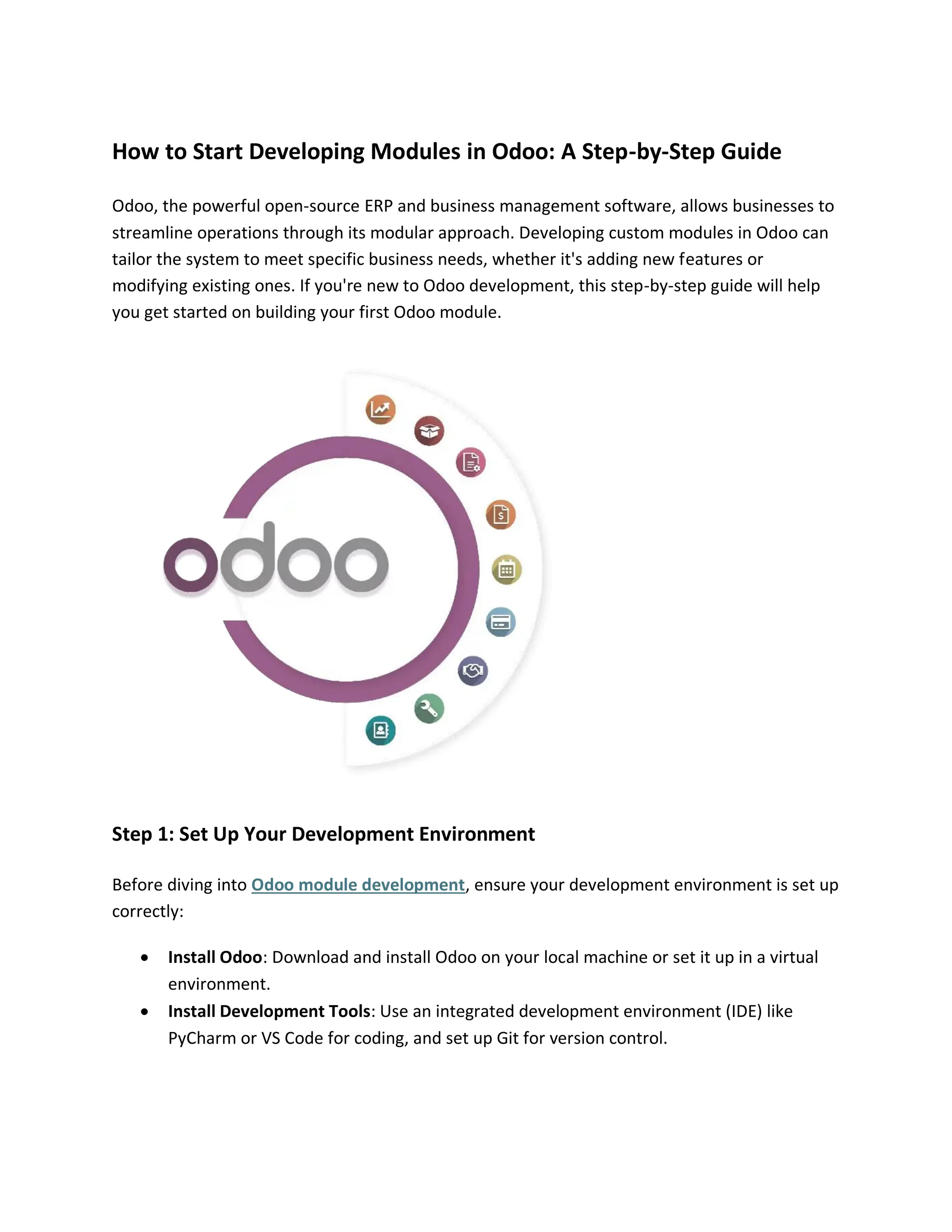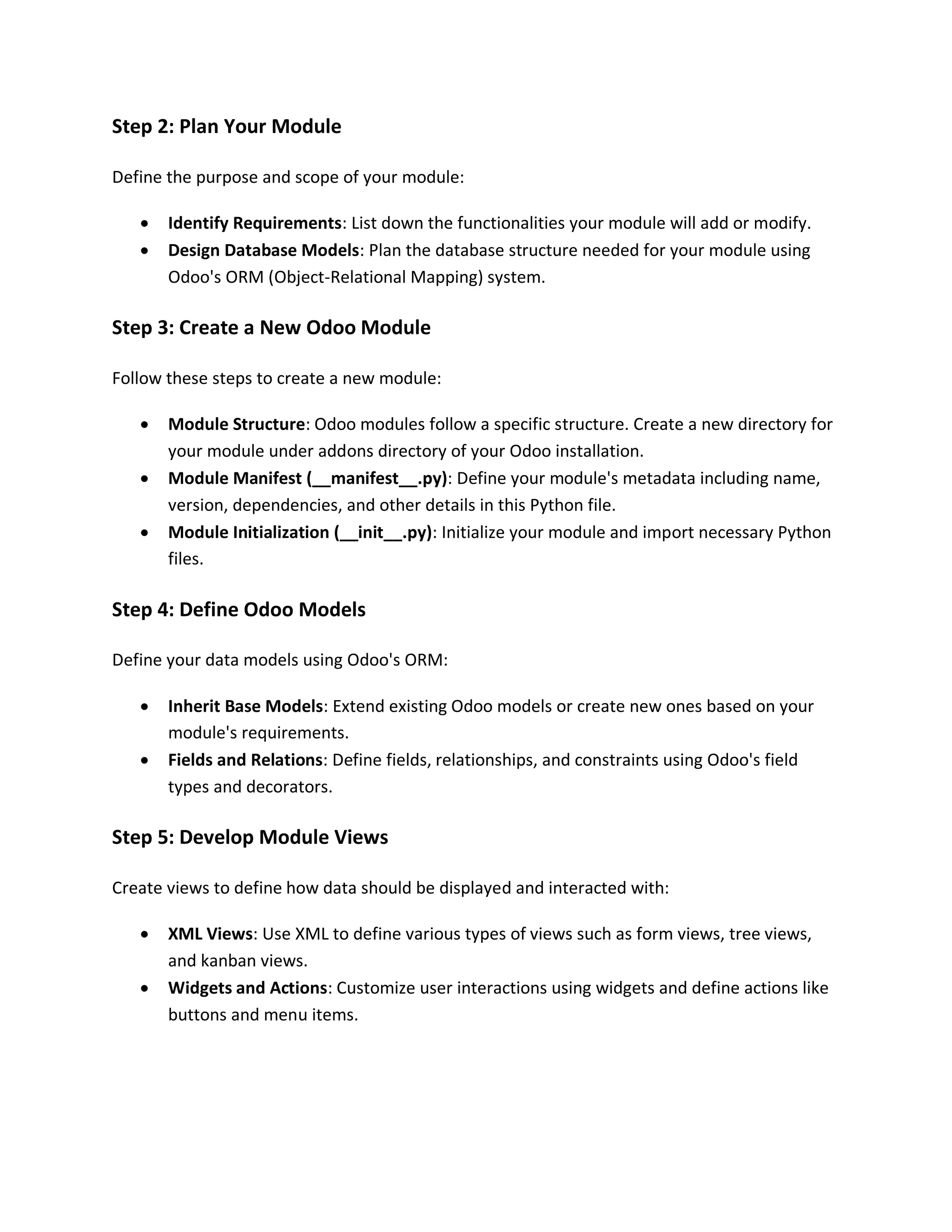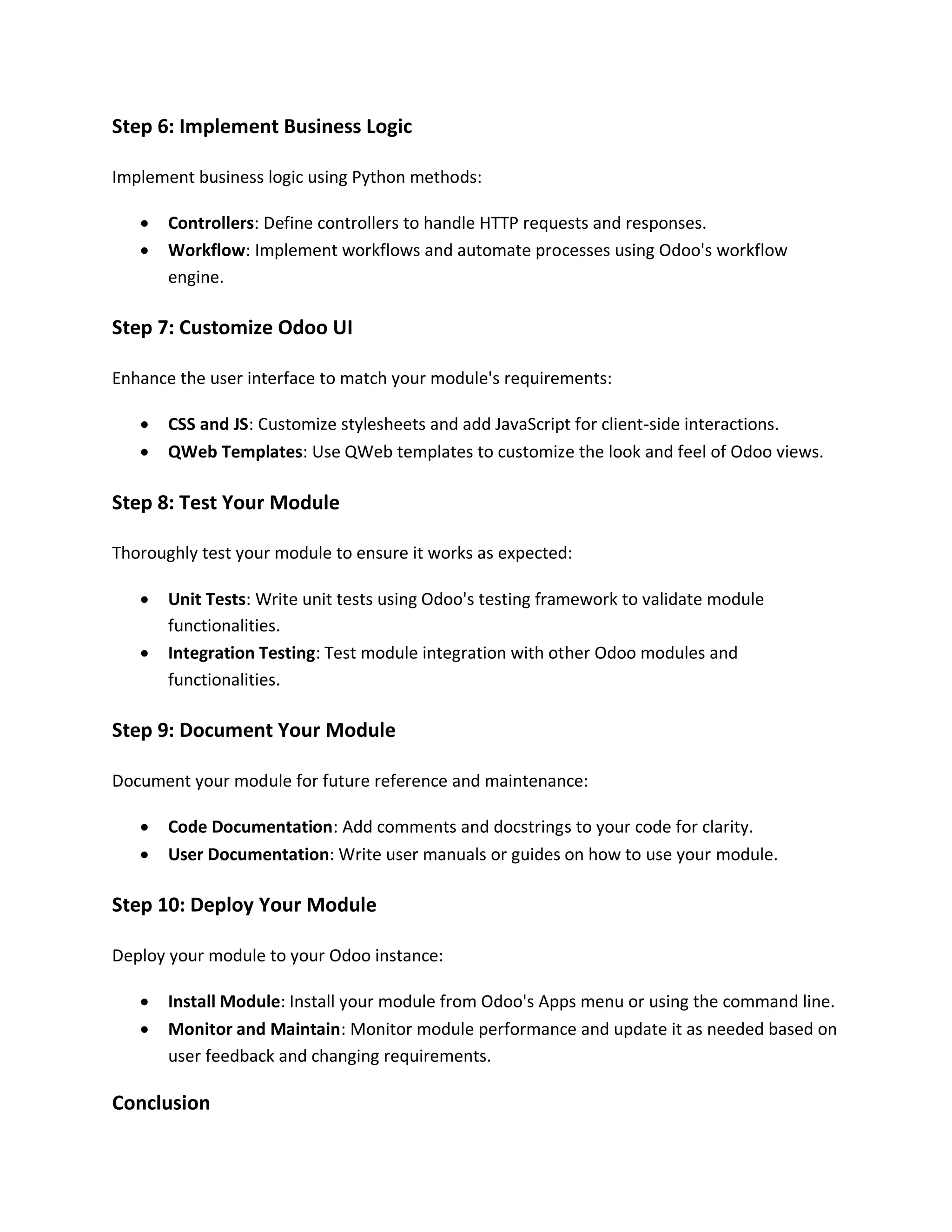This document is a step-by-step guide on developing custom modules in Odoo, the open-source ERP software. It outlines essential steps including setting up a development environment, planning, creating module structure, defining models, developing views, implementing business logic, testing, documenting, and deploying the module. By following this guide, users can tailor Odoo to meet specific business needs and improve efficiency.



